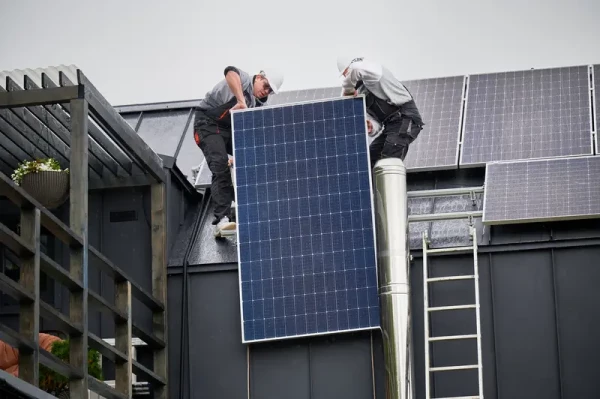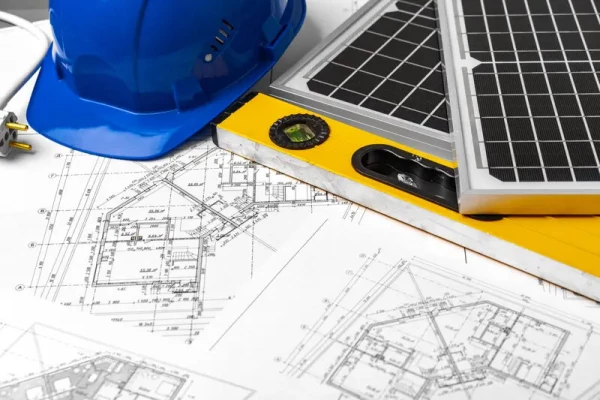0203 193 8888
0203 193 8888
Installing solar panels is a great step toward sustainable energy, but securing planning permissions can be complex. Begin by understanding local regulations and checking if your project falls under permitted development rights. Engage with planning authorities early on, seeking pre-application advice and addressing concerns. When submitting your application, provide comprehensive plans and consider environmental impact, showcasing your commitment to sustainability. Foster community engagement to build support, and stay proactive throughout the approval process.
When installing solar panels, several key considerations come to the forefront. Firstly, it's crucial to assess the structural integrity of your roof or chosen installation site. Ensure that it can support the weight of the solar panels and any additional equipment. Additionally, consider the orientation and tilt of the panels to optimise sunlight exposure. The angle should be adjusted based on your geographical location to maximise energy generation. Moreover, think about potential shading issues from nearby structures or trees, as even small shadows can significantly impact solar panel efficiency. Finally, evaluate the electrical wiring and connections to seamlessly integrate the solar system with your existing power infrastructure. Engaging with a qualified installer during this planning phase can help you navigate these considerations and ensure a smooth installation process.
Get In Touch 0203 193 8888
0203 193 8888

When seeking planning permission for solar installations on commercial buildings, collaboration with local planning authorities is paramount. Begin by understanding the specific regulations and policies that govern commercial properties in your area. Clearly articulate the benefits of a solar installation for your business, emphasising the positive environmental impact and potential cost savings. Work closely with architects and engineers to design a system that aligns with the aesthetic and structural requirements of the commercial building. Engage in proactive communication with local residents and businesses, addressing any concerns and highlighting the positive contribution your solar project can make to the community. A well-prepared planning application, complete with detailed plans and a comprehensive environmental impact assessment, will significantly enhance your chances of obtaining approval for solar installations on commercial buildings.
Get In Touch 0203 193 8888
0203 193 8888Take the first step towards clean, sustainable energy and request a quote today.
Get In Touch 0203 193 8888
0203 193 8888Securing planning permission for solar panels on a listed building requires a balance between harnessing renewable energy and preserving the historical integrity of the structure. Begin by conducting thorough research into the specific regulations governing listed buildings in your area, as these can vary widely. Engage with your local conservation officer early in the process to discuss your intentions and seek guidance on how to proceed. Emphasise the reversible nature of solar panel installations, showcasing their potential to minimise impact on the building's fabric. Prepare a detailed application that includes comprehensive plans illustrating the proposed solar panel layout and any mitigation measures to address aesthetic concerns. By demonstrating a commitment to preserving the architectural heritage while embracing sustainable practices, you increase the likelihood of obtaining planning permission for solar panels on a listed building.
Consider incorporating design elements that seamlessly integrate solar panels into the historic structure, such as discreet placement on less visible roof sections. Striking a balance between energy efficiency and architectural preservation is key to navigating the planning permission process for listed buildings successfully. Be prepared to collaborate closely with heritage experts, architects, and local authorities throughout the application process, ensuring that your solar panel installation respects and enhances the character of the listed building.
When seeking planning permission for solar panels on a flat roof, attention to design and structural considerations is paramount. Begin by consulting local planning authorities to understand any specific guidelines pertaining to flat roof installations in your area. In many cases, flat roofs offer an excellent opportunity for solar panel placement due to their expansive and unobstructed surfaces. However, it's crucial to provide detailed plans that address load-bearing capacity, drainage, and any potential visual impact on neighbouring properties. Collaborate with a structural engineer to assess the flat roof's ability to support solar panels and design a system that maximises energy production without compromising the structural integrity of the building.
Ensure that your application emphasises the low-profile and sleek nature of flat roof solar installations, minimising any potential aesthetic concerns. If applicable, consider green roof options that combine vegetation with solar panels, providing an eco-friendly and visually appealing solution. By thoroughly addressing both technical and aesthetic aspects in your planning application, you enhance the likelihood of obtaining permission for solar panels on a flat roof. Keep lines of communication open with planning authorities to address any additional questions promptly, facilitating a smooth approval process for your energy-efficient project.
Take the first step towards clean, sustainable energy and request a quote today.
Get In Touch 0203 193 8888
0203 193 8888Obtaining planning permission for ground-mounted solar installations involves careful consideration of the site's location, visual impact, and potential environmental effects. Begin by thoroughly researching local planning regulations and engaging with planning authorities to understand specific requirements for ground mount solar projects. Assess the site's suitability in terms of its proximity to residential areas, ecological sensitivity, and visual prominence. Develop a comprehensive plan that includes detailed landscape screening measures to minimise the visual impact of the solar array. Clearly demonstrate your commitment to environmental stewardship by incorporating wildlife-friendly features and promoting biodiversity around the ground-mounted solar installation.
Engage with the local community early in the process, addressing any concerns and highlighting the benefits of ground-mounted solar, such as job creation and renewable energy production. Consider conducting environmental impact assessments to identify and mitigate potential ecological risks. Providing a robust application that accounts for both environmental and community considerations will strengthen your case for obtaining planning permission for ground-mounted solar installations. Regularly communicate with planning authorities throughout the process, addressing any questions or concerns promptly to facilitate a smooth approval process for your sustainable energy project.
Gaining planning permission for solar panels in a conservation area requires a thoughtful approach that balances the benefits of renewable energy with the need to preserve the area's unique character. Begin by conducting a thorough assessment of the conservation area guidelines and engage with local planning authorities to understand specific considerations for solar installations. Emphasise the reversible and sustainable nature of solar panels, underlining their potential to contribute to environmental conservation without compromising the historical significance of the area. Collaborate with heritage experts and conservation officers early in the planning process to ensure your proposal aligns with the conservation area's objectives.
Prepare a detailed application that includes visual impact assessments and demonstrates how the solar panels will integrate harmoniously into the conservation area. Consider low-profile solar panel designs and explore options such as in-roof installations to minimise visual disruption. Highlight the energy efficiency benefits and the role your solar project can play in promoting sustainable practices within the conservation area. Engage with the local community through public consultations to address concerns and gather support for your environmentally responsible initiative. By actively involving key stakeholders and meticulously addressing the unique challenges of conservation areas, you increase the chances of obtaining planning permission for solar panels in these historically significant locations. Regular communication with planning authorities is essential throughout the process to address any inquiries promptly and ensure a smooth approval process for your sustainable energy project.
The requirement for planning permission in an area with an Article 4 Direction depends on the specifics outlined in the Article 4 Direction itself. An Article 4 Direction is a tool used by local planning authorities to restrict permitted development rights in a particular area. It allows the local authority to require planning permission for certain types of development that would normally be permitted without the need for a formal application.
If an area is subject to an Article 4 Direction regarding solar panel installations, it means that you would likely need to seek planning permission even if the installation would normally fall under permitted development rights. The Article 4 Direction could specify additional requirements, restrictions, or conditions that need to be considered when applying for planning permission for solar panels.
To determine the exact requirements in a specific area, it is essential to consult the local planning authority and review the details of the Article 4 Direction that applies. The local planning office can provide information on whether planning permission is required for solar panels and any additional conditions or considerations imposed by the Article 4 Direction. Always check with the local authorities to ensure compliance with the current regulations in your specific location.